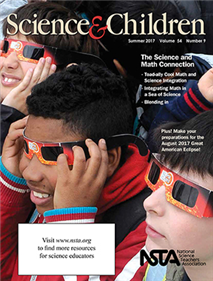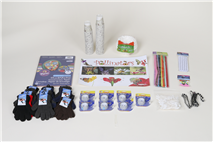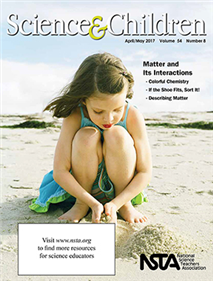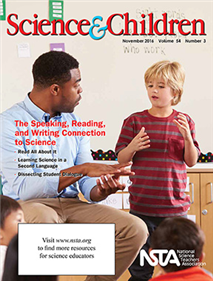All Crosscutting Concepts resources
Journal Article
The Early Years: Taking Math Outside
This column discusses resources and science topics related to students in grades preK to 2. This month’s issue uses children’s interest in collecting outdoor objects to develop their number sense and to build their understanding of math concepts...
Blog Post
When I began aligning my instruction to the Next Generation Science Standards (NGSS), I got lost in the details. But when I realized that phenomena could be used to anchor linked disciplinary core ideas, I started to visualize the course as a whole a...
By Cindy Workosky
Blog Post
Using the Crosscutting Concepts to Scaffold Student Thinking
At the recent NSTA National Conference in Los Angeles, three-dimensional learning was, of course, a major topic of discussion. When those discussions focus on classroom instruction, though, the crosscutting concepts are often the forgotten dimension....
By Cindy Workosky
Blog Post
At the core of a Next Generation Science Standards (NGSS) classroom is the sequence of exposing students to an interesting natural phenomenon, having students generate questions about the phenomenon, investigating student questions, then creating a s...
By Cindy Workosky
Blog Post
Introducing Crosscutting Concepts in the Elementary Grades
Four years ago, I moved from teaching middle school science to teaching grades 2–5 STEAM (science, technology, engineering, art, and mathematics) labs. One of the biggest challenges I faced was limited lab time in our elementary school. Because we ...
By Cindy Workosky
Blog Post
Digging Deeper: Designing Solutions
This month’s Digging Deeper column for the Next Gen Navigator focuses on the practice of constructing explanations and designing solutions, and specifically the design process that addresses the engineering component of the Next Generation Science ...
By Cindy Workosky
Blog Post
How I Came to Understand the Three Dimensions
When I first started teaching science, I taught the facts. I taught the nine planets (before Pluto got demoted; sorry, Pluto!), the steps of mitosis, and the workings of plate tectonics, for example. I was proud that I had students who could learn th...
By Cindy Workosky
Class Pack
Flight of the Pollinators PPSTEMK-2 Classpack
*LAST CHANCE! This product is not eligible for return or exchange. All sales are final.* Using Picture-Perfect STEM Lessons: K-2: Using Children’s Books to Inspires STEM Learning in your classroom is easier than ever! NSTA’s ClassPacks, eac...
Journal Article
Science 102: The Sound of One Hand Clapping
This column shares exercises to challenge content knowledge. This month's issue presents a new challenge and answers the Raindrops Keep Falling challenge from last month. ...
NSTA Press Book
Learning to Read the Earth and Sky: Explorations Supporting the NGSS, Grades 6–12
Is it time to refresh the way you think about teaching Earth science? Learning to Read the Earth and Sky is the multifaceted resource you need to bring authentic science—and enthusiasm—into your classroom. It offers inspiration for reaching beyon...
By Russ Colson, Mary Colson
Journal Article
Methods and Strategies: Put Your Walls to Work
This column provides ideas and techniques to enhance your science teaching. This month’s issue discusses planning and using interactive word walls to support science and reading instruction....







